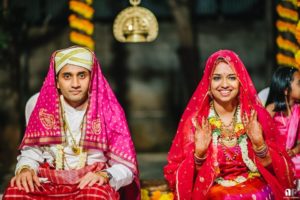Blog Details
South Indian Weddings (Coorg or Kodagu Wedding in Karnataka )
Posted on 26, July 2022 11:06:18 AM

Welcome to EdigaMatchmaker
Like most Indian weddings, the Coorg wedding, or Mangala as it is called in the Kodava language, is a fun-filled, colorful affair. It is a joyous celebration with much feasting and dancing, eagerly awaited by relatives and friends. It is also an occasion to meet, exchange news and gossip and look for matches for prospective brides and grooms; an occasion that allows women an opportunity to show off their saris and jewelry. Prayers are offered to ancestors at the sacred lamp and the wedding ceremony is guided by elders whose blessings are sought. These simple but meaningful acts and some unusual rituals make the Coorg wedding rather unique.
The traditional Coorg wedding these days is a two-day affair that sometimes spills over to the early hours of the third morning (if the dancers at the Ganga puja dance through the night!). The day preceding the wedding is called the Uur kuuduva or Karik muripa day when preparations are made for the wedding day. The important ceremonies on the wedding day are the Muurtha - when the bride and groom are blessed by all those assembled, the Sammanda kodupa - when the bride is given rights in her husband’s house and the Ganga puja - when the bride is welcomed and accepted as a member of the groom’s family. In the past, the Karik muripa and Muurtha ceremonies were celebrated separately and concurrently for the bride and the groom in their respective ainmanes (ancestral houses of okkas or patrilineal clans) where they were blessed by their relatives and friends. Such a muurtha that is held separately for the bride or the groom is colloquially called a ‘single’ muurtha. The groom would then go to his bride’s house in a procession with a small group of his relatives and friends for the dampathi muurtha (common or ‘double’ muurtha for the bride and groom together) after which the bride was given the Sammanda rights. After that, the groom would bring his bride to his home in a procession, and the Ganga puja would be held there. This practice is followed occasionally even today.